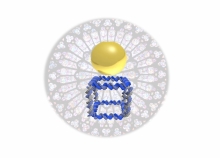Researchers from McGill University believe that they have found a way to improve the development of biomaterials that could be instrumental in drug delivery, tissue regeneration, nano-optics and nanoelectronics.


Many studies indicating that DNA nanostructures can enter cells more readily than simple DNA strands are flawed, according to researchers at McGill University. In a paper published in the American Chemical Society journal ACS Central Science, the McGill scientists demonstrate that many DNA cage nanostructures aren’t taken up by cells to a significant extent.


McGill University researchers have chemically imprinted polymer particles with DNA strands – a technique that could lead to new materials for applications ranging from biomedicine to the promising field of “soft robotics.”
In a study published in Nature Chemistry, the researchers describe a method to create asymmetrical polymer particles that bind together in a spatially defined manner, the way that atoms come together to make molecules.

By Chris Chipello, McGill Newsroom
Could a cheap molecule used to disinfect swimming pools provide the key to creating a new form of DNA nanomaterials?

Gold nanoparticles have unusual optical, electronic and chemical properties, which scientists are seeking to put to use in a range of new technologies, from nanoelectronics to cancer treatments.

Imagine taking strands of DNA – the material in our cells that determines how we look and function – and using it to build tiny structures that can deliver drugs to targets within the body or take electronic miniaturization to a whole new level.

Researchers at McGill University have developed a new, low-cost method to build DNA nanotubes block by block – a breakthrough that could help pave the way for scaffolds made from DNA strands to be used in applications such as optical and electronic devices or smart drug-delivery systems.
